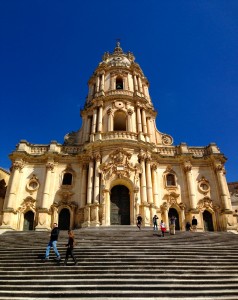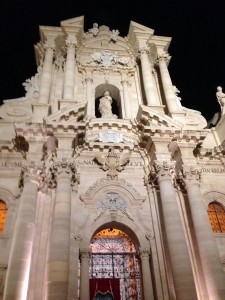In the second half of our trip, we traveled to cities located on the southeastern part of the island. Here in the towns of Ragusa, Noto, Modica, Syracuse, and Catania we encountered buildings, in particular churches constructed in the baroque style. The Sicilian baroque style arouse after a massive earthquake in the 17th century. From the total destruction caused by this natural disaster, the local inhabitants gained the opportunity to rebuild their homes according to the then fashionable baroque ideals. In particular, Sicilian baroque is best known for its theatricality. The elaborate three-tiered, concave church facades adorned with elaborate Corinthian columns and other recognizable curves and flourishes inescapably attract one’s eye. In many ways, the ornateness of Baroque architecture presents itself as a reflection of the heavenly splendor of God; its richness a defiant reaction to the simplicity propounded by Protestantism.




Additionally, it was interesting to see the distinct building materials used to construct the different churches. There was a great variety of local stone used; from the warm, honey-colored stone in Ragusa to the dark volcanic rock in Catania, located just beneath Mt. Etna’s snowy peak.